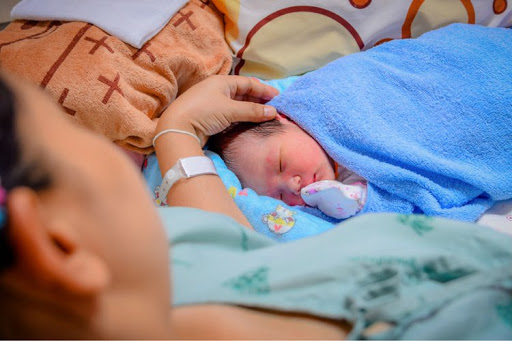Maternal Mortality Rate (MMR) in Surabaya in the last 3 years has decreased quite significantly, but is still quite high, 72.99 per 100,000 live births in 2018. Even though it has shown good progress, Surabaya still occupies the second largest MMR in East Java Province. Nyoman Anita Damayanti, who is the leader for GELIAT (Movement for Healthy Mother and Child Care) UNAIR stated “One of the causes of maternal death in childbirth, among others being late in making decisions, late coming to health facilities and being late in receiving medical assistance”.
This is also supported by the results of in-depth interviews at 6 Community Healthcare Centers (Puskesmas) in Surabaya with the Head of Puskesmas and midwifes in urban communities which stated, “One of the problems poses risk of causing maternal death is the process of maternal delivery referral, because Puskesmas have difficulty finding a hospital with available resources to accept the condition of the referred pregnant woman”. Focus Groups Discussion (FGD) which was conducted with several midwives also mentioned, among others:
- 1. When referring patients, the Puskesmas must call the Hospital (RS) one by one (in this case the hospital is the advanced healthcare facility).
- 2. Often when referring to government hospitals, referrals are often rejected because the hospital thinks that they can still be handled at the Puskesmas.
- Referred patients are often returned to the Puskesmas. Most of these patients have mild pre-eclampsia and post-date patients and Puskesmas were unable to treat patients with these conditions. In addition, private hospitals do not want to accept BPJS patients if they are not really an emergency so that patients are often returned to the Puskesmas.
- 4. Many patients do not know that normal delivery should take place at the FKTP (First Level Healthcare Facility).
- 5. When there is a referral, the Puskesmas usually contacts the lowest type hospital first, if there is no response, they will be immediately referred to dr. Soetomo. Thus there can be accumulation of patients in RSUD Dr. Soetomo who later will also have an effect on the quality of service for mothers giving birth.
The problem of referral communication between Puskesmas and hospitals is very important to be resolved by developing a mobile application system in finding available hospitals with resources who accept the condition of pregnant women. The main function of this mobile application is to reduce the risk of maternal death during childbirth. Users of this mobile application are Puskesmas midwives and referral hospital IRD officers. This mobile application is developed based on the results of the FGD with midwives, doctors and the head of Puskesmas regarding the regulation of referral system in the City of Surabaya and FGD with obstetricians who agree on several indicators of maternal condition that must be considered in the referral and return referral process.
This mobile application was developed with internet communication media and SMS media and internet chosen as the default. So if the gadget is outside the reach of the internet, the referral SMS message will be sent instead. This automation was developed to prevent failed message delivery in an emergency. The communication flow of this mobile application is to send an emergency message at Puskesmas to the hospital broadcast via the mobile application system, the hospital with available resources for the condition of the patient will respond to messages through the mobile application system, the patient is referred and treated at the hospital. The process will end with a return to the Puskesmas as a postpartum control service. The flow process is:
- 1. Puskesmas submits report (broadcast using an agreed format) and will refer to the hospital. If the hospital does not immediately respond, there is a button to make direct call
- 2. At the target hospital, there will be a notification in the form of an alarm that there is a referral request. In the notification there is an option to accept or reject buttons
- A. The process of accepting and rejecting is not in all hospitals, some only show accepting button. There is only 1 hospital with one button (RS Soetomo)
- 3. The referrer chooses which hospital to go to, then the referrer presses the telephone button to communicate with the selected hospital. The other hospital knows that the referrer is communicating with the hospital (chosen by the referrer).
- 4. If the referrer chooses yes (yes button), it means it refers the patient. If you choose not, then the referer can move to another hospital to communicate and return to point 3
- 5. Patient accepted by the hospital, by pressing the accepting button when the patient arrives. Referral patient acceptance notification will be sent to three other hospitals
Diah Indriani (Head Researcher) in this study said, “This mobile application has been through a trial process at Puskesmas and hospitals, but is currently in the process of development based on bugs that occur in the system. Besides, it is currently being developed to suit the condition of pandemic COVID-19 because there will be differences in the referral process according to the condition of pregnant women who are infected with COVID-19 or not ”.
Author: Diah Indriani
The full article can be viewed at the following link:





